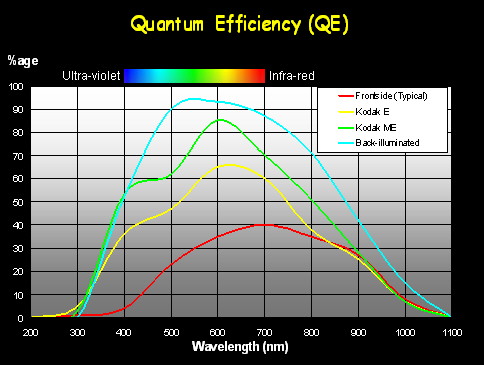
|
Infra-Red ImagingSeeing beyond the Milky WayDavid Ratledge |
 |
IntroductionThe majority of CCD imagers use an infra-red (IR) filter specifically to block that part of the spectrum. This is because silicon detectors (CCD/CMOS) are very sensitive to this wavelength – in fact almost 50% of their sensitivity is in the IR. By blocking IR a truer visual colour image results. Also telescopes with refractive elements do not generally bring IR to the same focus making for a blurred image so normally blocking IR makes sense. |
|
Quantume Efficiency of CCD/CMOS silicon detectors. Note the sensitivity extending well into the (near) infra-red
|
However, by doing the reverse, ie passing the IR and blocking the visual, we have at our disposal a powerful IR detector (technically it is the “Near Infra-red”). To do this we need an IR pass filter and these are easily available from camera shops for a relatively low cost (£25 ish). To the eye they look like black glass and putting one in our telescope could appear to be verging on insanity but they do open new opportunities for us. They are also the ultimate light pollution filter as no light is passed at all! |
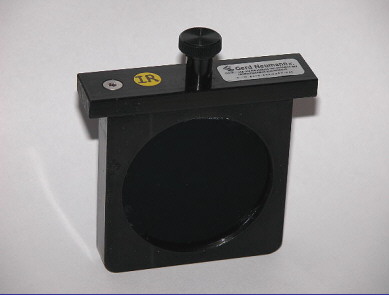 |
This is what an Infra-red pass filter looks like – black glass! |
So what are those opportunities? Firstly IR has penetrating properties – it can see through obscuring material. Secondly it reveals objects that just emit in the IR like high redshift quasars. Here we will look at the former and it’s role in discovering a nearby cluster of galaxies. |
Zone of Avoidance (ZOA)An old term perhaps and one not used too often today. It refers to the area of sky where galaxies were not found or were very rare. It coincides with the area covered by the Milky Way and it was soon realised that it was obscuring material in our Galaxy (dust and gas) that was blocking the view rather than in fact there being no galaxies in that direction. What IR gives us is the ability to see through the Milky Way and reveal objects beyond. Our story starts back in 1968 when an Italian Astronomer Paulo Maffei was experimenting with IR sensitive film. He discovered a fuzzy patch on the Milky Way not present on visible light images but he was unable to work out what it was. He also spotted a second, much fainter patch, and published his findings. It wasn’t until the early 70s that it was realised that what he had recorded were obscured galaxies. Even today it is difficult to work out their exact distances as thee obscuration is so high but it is known they are part of a major nearby cluster of galaxies around perhaps 10 million light-years distant. The larger and brighter Maffei1 is a large elliptical galaxy and Maffei2 is classic barred spiral. Armed with our IR filter both are in range of amateur telescopes.
|
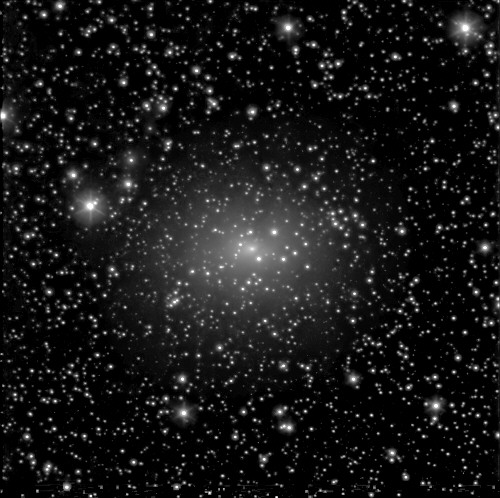 |
The giant elliptical galaxy Maffei1. Probably the nearest large elliptical to us. Shooting in the Infra-red reveals the giant in all its glory. |
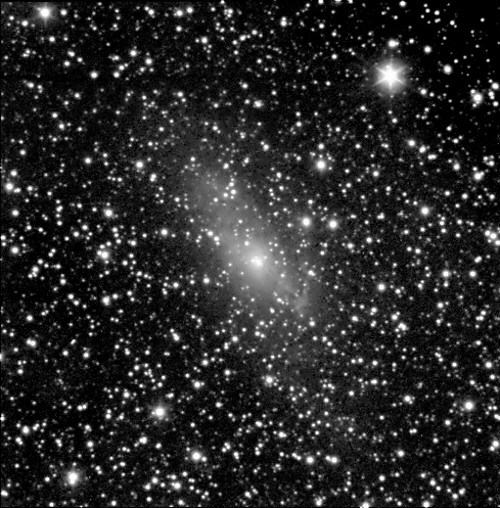 |
The classic barred spiral Maffei2. In the Infra-red the bar shows up much more than the arms. The brigher patch overlaying its northern side is though by some to be a satellite galaxy. |
|
The story moves on to the mid 1990s with the Dwingeloo Obscured Galaxy Survey (DOGS) using the Dutch Radio telescope at Dwingeloo. Nearby galaxies hidden behind the ZOA are important because they may have an influence on the dynamics of the Local Group and its peculiar motion relative to the cosmic microwave background. The Dwingeloo radio telescope discovered 2 radio galaxies nearby to the Maffei pair. These were soon imaged by IR professional telescopes and Dwingeloo1 turned out to be another barred spiral and Dwingeloo2 a small irregular galaxy of uncertain morphology – it overlain by 2 bright stars whick makes identification very difficult. A third (non-radio) nearby galaxy, probably a dwarf spherical, was discovered soon after by McCall and Buta and is known as MB3. Amazingly all 3 are easily detectable.
|
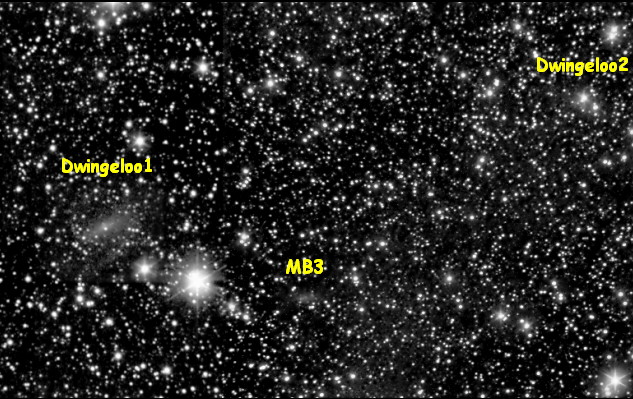 |
| The Dwingeloo trio of galaxies - Dwingeloo 1 and 2 plus MB3 |
Together with other discoveries it became apparent that this was a nearby group of galaxies. The adjacent galaxy IC342 had long been known but had been assumed to be a single galaxy perhaps ejected from the local group. The new group is now known as the Maffei/IC342 group and is one of the most important groups close to our own local group. In all about 16 galaxies are now known and most can be imaged in the IR by amateurs.
|
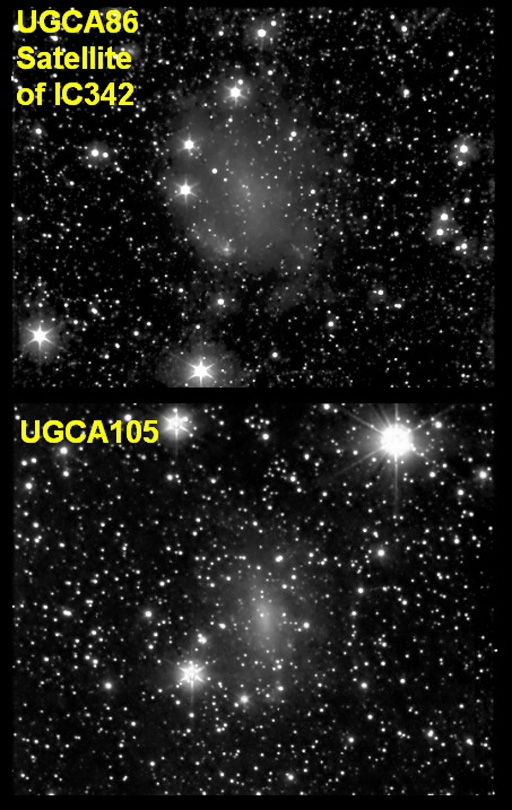 |
Two more members of the group. UGCA86 is a satellite of IC342.
Galaxy UGCA105 This dwarf appears to have a slight bar. |
Cassiopeia1 A very faint member of the group |
|
Camelopardalis A Another very faint member of the group |
|
Camelopardalis B Yet another very faint member of the group |
If you enjoyed this adventure with Infra-Red imaging then see also Imaging the High Redshift Quasars - coming soon
